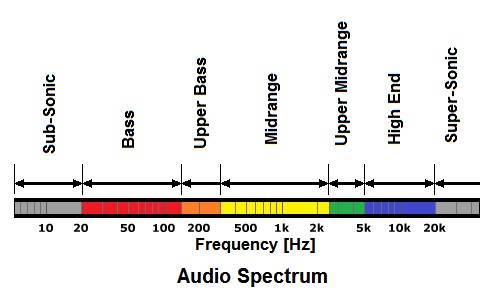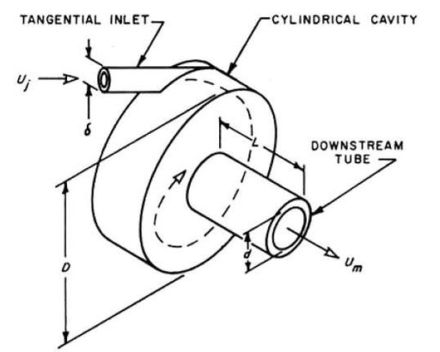
Let's Make Some
Noise
You've heard it before, probably a hundred times over already, from the mouths
of noisicians (noise-musicians), "I want to create sounds that will make
people throw-up, or shit their pants."
Sadly, unless they're talking about making a style of music that's so psychologically
creepy that it causes sickness or insta-crapping, they don't know their science.
Sound is a simple set of vibrations, ranging in varying Hz (hertz = cycles per
second) and dB (decibels = volume). Hertz can range from the negative field
(say, -5 Hz) to as high as 1000 MegaHz. Decibels range is from 0 dB (absolute
silence) to 1000 dB (atomic explosions) - though decibels may go higher, only
the explosion of a volcano near Indonesia surpassed it. Called Krakatoa, the
volcano created the loudest known sound, which reverberated around our planet
seven times and was detectable for five days, in 1883.
The human ear can only pick up the sound field of 20 Hz through 20,000 Hz, where
as a dog's hearing range is 60 Hz to 45,000 Hz, and a cat's is 40 Hz to 85,000
Hz.
Any sound lower than 16 Hz is considered "infrasound", and is so low
we tend to feel it, over hearing it. Sounds above the human limit of 20,000
are considered "ultrasound", and are usually ineffective to us.

To get someone
to poop their pants at one of your rockin' shows, you're gonna have to work
with infrasound, but there's another catch: you're also gonna have to work with
organic sound emitted by an item you use at then and there, and not mechanical,
or pre-recorded, sounds emitted by speakers, a PA or any other sound system.
Why?
That's simple. All manufactured speakers are built with a range from 16 HZ to
16,000 Hz (the frame between infra and ultrasound), so no matter how hard you
try, your equipment just won't produce it.
Before I teach you how to actually decimate your audience's underwear, or destroy
your fan base, let me get into some more science.
Infrasound is naturally found all around you; from high winds, the ocean, and
thunder to natural disasters like earthquakes. Even a car traveling at 60 mph,
with the windows slightly open, creates a frequency of 16 Hz at 112 dB - enough
to make some drivers appear drunk.
The study of infrasound was put to practical use in the First World War, where
infrasound detection equipment was used to locate where enemies were launching
large artillery. It was later taken more seriously at Wright-Patterson Air Force
Base in Dayton, Ohio, throughout the early 60s by Dr. Henning E. von Gierke
(a Nazi scientist picked by the U.S. in their Project Paperclip, and
member of the Acoustical Society of America), where he developed infrasound
weaponry.

The previous WWI
techniques - and later weapons - pretty much stayed a United States secret,
until 1965, when members of the French National Center for Scientific Research
in Marseilles began having headaches and feeling sick, only to find it was all
caused by a large industrial fan that emitted an infrasonic sound, and began
studying sounds and their effects on humans.
It was found that differing sound frequencies at differing volumes have detrimental
effects on the human body, as well as the mind.
0 - 50 Hz above 140 dB can cause organs to rub against one another, internal
bleeding, gag reflexes, respiratory trouble, mental breakdown, and fatigue.
50 - 100 Hz above 150 dB can cause headaches, choking, and visual blurring.
60 Hz at 150 dB causes coughing, and substernal pressure.
70 Hz at 150 dB causes salivation, pain on swallowing and light-headedness.
100 Hz at 150 dB causes nausea, giddiness, and flushing of the skin.
The most dangerous of all infrasound (0 Hz - 16 Hz) is at 7 Hz, as low as 60
dB, which causes disassociation, impaired thinking, troubled breathing, and
severe psychological trauma (including panic and psychosis). This sound range
is dangerous simply because it is the range of our brain's alpha waves, so it
can interrupt them.
At the same time, infrasound is medically beneficial, as doctors have used it
to restore the sense of smell in patients, and helped stimulate ovulation in
women. It also has a commercial use, as it's a feature in theater's "Sensurround",
which was first used in the 1971 disaster film Earthquake.
Okay, now I'll teach you noise-hounds how to fuck shit up, or shit fuck-ups.
Whistles can emit one of the most dangerous audible sounds, so the larger the
worse. A regular whistle emits 1 watt of acoustic output (to compare, an everyday
conversation emits 1 milliwatt). The Levavasseur whistle (Patent # US2755767
A) is nothing more than a regular whistle attached to an acoustic cavity of
2 ft in diameter, along with a 1 ft tube (looking much like a larger whistle),
and, in tests, emitted 400 watts at a sound range of 2600 Hz. One was created
with a 4 ft diameter cavity, and a 2 ft pipe, which emitted a hardly audible
acoustic resonance of 1000 watts at a range of only 37 Hz. Therefore, a whistle
with a 16 ft cavity would emit the mind-numbing 7 Hz range.

Next is what is
called the "Acoustic Gun", which is nothing more than an L-shaped
tube of about three feet in length (at each angle) encased in 300 lbs of concrete.
The way noise travels throughout the L shape, plus the encasing concrete making
the sound vibrations bounce in the interior, causes a sound range of 190 Hz,
and at 100 dB (very loud yelling in the mouthpiece) can cause painful internal
vibrations at whomever it is pointed at.
Lastly is the "Acoustic Laser", which is nothing more than 49 tubes
(all of equal length) attached in seven rows of seven tubes, with a spacing
of 2 inches between each tube. At the mouthpiece, all the tubes are connected
to one another into a single tube with flexible plastic tubing. This can be
pointed at a group of people for a frequency of 0.6 Hz, causing organs to vibrate,
and wild coughing.
Of course, you can test, and try to invent your own, but I do caution against
some of these experiments as the creator of the Levavasseur whistle, Robert
Levavasseur - according to documents from his colleague, Vladimir Gavreau (Science
Journal Vol. 4, No. 1, 1968) - became an invalid upon the creation of one
of the larger models.
Plus, being a fan of noise music, I could be out in the audience, and if you
point that thing at me, I'll kick your nerdy ass - then rub all over your face
what you made me do in my pants.
A. Souto, 2009/2014
BACK TO MUSICA OBSCURA ARTICLE LIST